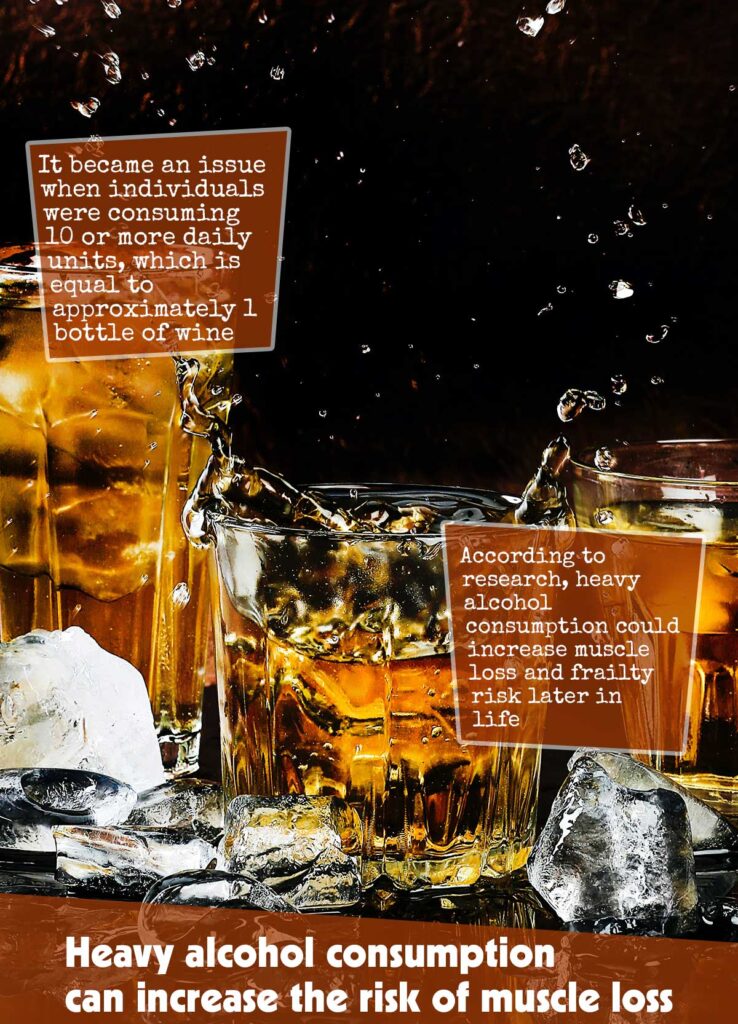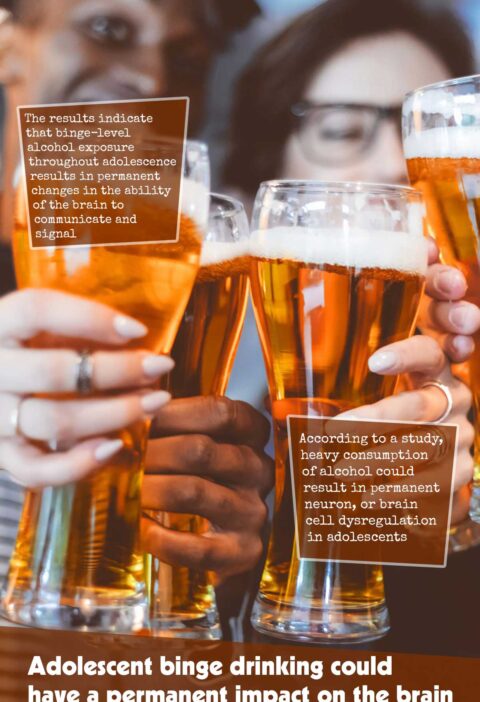Research indicates that alcohol can contribute to muscle atrophy and frailty risk later in life. According to statistical modeling, individuals with the lowest muscle volume were consuming 10 or more units daily of alcohol – equivalent to approximately one bottle of wine – per day.

Researchers used body size as the baseline, since larger individuals tend to possess greater muscle mass. Furthermore, other factors were taken into consideration such as physical activity and protein consumption.
Results, predominantly among individuals in their 50s and 60s, demonstrate another reason to limit alcohol intake: as we age we lose muscle which contributes to frailty later on in life.
Alcohol consumption is a risk factor for multiple conditions; therefore, researchers wanted to explore its effect on muscle health as we age.
Researchers examined data from the UK Biobank database containing health and lifestyle data on over half a million individuals; approximately 200,000 of those between ages 37-73 were included for analysis.
Researchers compared how much alcohol participants were consuming with the amount of muscle mass each had, according to body size of participants.
Other considerations included protein consumption levels, physical activity levels and any other aspects that might influence muscle gain.
Most participants were in their 50s and 60s. It was discovered that individuals consuming large quantities of alcohol experienced lower amounts of skeletal muscle when taking into account body size and other factors.
Problems began when individuals consumed 10 or more daily units – equivalent to approximately one bottle of wine or four or five pints – without adequate monitoring and supervision.
Muscle mass and alcohol consumption were measured simultaneously in individuals; thus establishing any causal links is impossible. However, this study suggests that higher consumption levels could potentially have detrimental effects on muscle mass.
Losing muscle as we age leads to weakness and frailty; thus providing another reason why regular consumption of alcohol in middle age should be limited.






